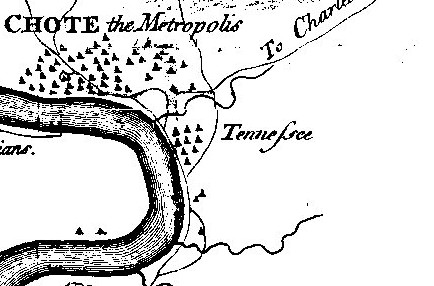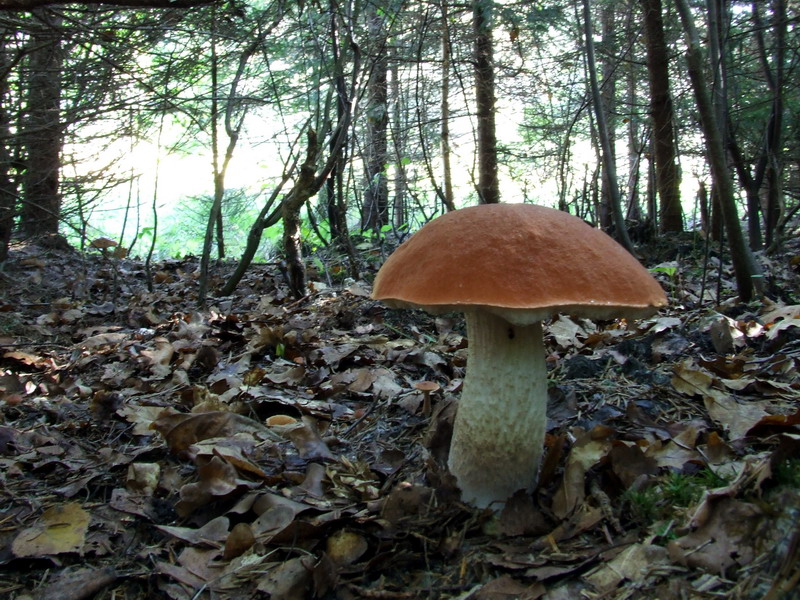|
Douglas Lake Member
The Douglas Lake Member is a geologic unit of member rank of the Lenoir Limestone that overlies the Mascot Dolomite and underlies typical nodular member of the Lenoir Limestone in Douglas Lake, Tennessee, region. It fills depressions that are part of a regional unconformity at the base of Middle Ordovician strata, locally the Lenoir Limestone, that separates them from the underlying Lower Ordovician strata, locally the Knox Group.U.S. Geological Survey, 2020Geologic Unit: Douglas Lake Walker, K.R., Steinhauff, D.M., and Roberson, K.E., 1992. ''Uppermost Knox Group, the Knox unconformity, the Middle Ordovician transition from shallow shelf to deeper basin at Dandridge, Tennessee'', In Driese, S.G., and others, eds., ''Paleosols, paleoweathering surfaces, and sequence boundaries'', ''University of Tennessee, Department of Geological Scienc ... [...More Info...] [...Related Items...] OR: [Wikipedia] [Google] [Baidu] |
Tennessee
Tennessee ( , ), officially the State of Tennessee, is a landlocked state in the Southeastern region of the United States. Tennessee is the 36th-largest by area and the 15th-most populous of the 50 states. It is bordered by Kentucky to the north, Virginia to the northeast, North Carolina to the east, Georgia, Alabama, and Mississippi to the south, Arkansas to the southwest, and Missouri to the northwest. Tennessee is geographically, culturally, and legally divided into three Grand Divisions of East, Middle, and West Tennessee. Nashville is the state's capital and largest city, and anchors its largest metropolitan area. Other major cities include Memphis, Knoxville, Chattanooga, and Clarksville. Tennessee's population as of the 2020 United States census is approximately 6.9 million. Tennessee is rooted in the Watauga Association, a 1772 frontier pact generally regarded as the first constitutional government west of the Appalachian Mountains. Its name derives fr ... [...More Info...] [...Related Items...] OR: [Wikipedia] [Google] [Baidu] |
Phyllocarid
Phyllocarida is a subclass of crustaceans, comprising the extant order Leptostraca Leptostraca (from the Greek words for ''thin'' and ''shell'') is an order of small, marine crustaceans. Its members, including the well-studied '' Nebalia'', occur throughout the world's oceans and are usually considered to be filter-feeders. It ... and the extinct orders Hymenostraca and Archaeostraca. See also *'' Ceratiocaris'' *'' Cinerocaris'' *'' Vladicaris'' References External links Malacostraca Arthropod subclasses Paleozoic crustaceans Mesozoic crustaceans Cenozoic crustaceans Extant Cambrian first appearances Taxa described in 1879 Taxa named by Alpheus Spring Packard {{Malacostraca-stub ... [...More Info...] [...Related Items...] OR: [Wikipedia] [Google] [Baidu] |
Paleobotany
Paleobotany, which is also spelled as palaeobotany, is the branch of botany dealing with the recovery and identification of plant remains from geological contexts, and their use for the biological reconstruction of past environments (paleogeography), and the evolutionary history of plants, with a bearing upon the evolution of life in general. A synonym is paleophytology. It is a component of paleontology and paleobiology. The prefix ''palaeo-'' means "ancient, old", and is derived from the Greek adjective , . Paleobotany includes the study of terrestrial plant fossils, as well as the study of prehistoric marine photoautotrophs, such as photosynthetic algae, seaweeds or kelp. A closely related field is palynology, which is the study of fossilized and extant spores and pollen. Paleobotany is important in the reconstruction of ancient ecological systems and climate, known as paleoecology and paleoclimatology respectively; and is fundamental to the study of green pla ... [...More Info...] [...Related Items...] OR: [Wikipedia] [Google] [Baidu] |
Prototaxites
''Prototaxites'' is a genus of terrestrial fossil fungi dating from the Middle Ordovician until the Late Devonian periods, approximately . ''Prototaxites'' formed small to large trunk-like structures up to wide, reaching in length, made up of interwoven tubes around in diameter, making it by far the largest land-dwelling organism of its time. Whilst traditionally very difficult to assign to an extant group of organisms, current opinion suggests a fungal placement for the genus. Its exact relationship with extant fungus lineages is uncertain. It was almost certainly a perennial organism that grew over multiple years. Several ecologies have been proposed, including that it was saprotrophic like many modern fungi, or that it was a lichenised autotroph. Morphology left, upDawson's 1888 reconstruction of a conifer-like ''Prototaxites'' With a diameter of up to , and a height reaching , ''Prototaxites'' fossils are remnants of by far the largest organism discovered from th ... [...More Info...] [...Related Items...] OR: [Wikipedia] [Google] [Baidu] |
Lichen
A lichen ( , ) is a composite organism that arises from algae or cyanobacteria living among filaments of multiple fungi species in a mutualistic relationship.Introduction to Lichens – An Alliance between Kingdoms . University of California Museum of Paleontology. Lichens have properties different from those of their component organisms. They come in many colors, sizes, and forms and are sometimes plant-like, but are not plants. They may have tiny, leafless branches ( fruticose); flat leaf-like structures ( foliose); grow crust ... [...More Info...] [...Related Items...] OR: [Wikipedia] [Google] [Baidu] |
Palaeoglomus
''Palaeoglomus'' ("ancient ball") is a genus of microscopic mycorrhizal fossil, found in palynological preparations of rocks which separate out organic remains by acid dissolution. Description ''Palaeoglomus'' has large spherical to ellipsoidal spores with multilayered walls, as well as irregularly shaped vesicles, attached to aseptate hyphae. Species ''Palaeoglomus grayi'' type species from the Middle Ordovician Guttenberg Formation near Platteville, Wisconsin. ''Palaeoglomus boullardi'' from the Early Devonian Rhynie Chert bear Rhynie, Scotland. ''Palaeoglomus strotheri'' from the Middle Ordovician (Darriwilian, 460 million years old) Douglas Lake Member The Douglas Lake Member is a geologic unit of member rank of the Lenoir Limestone that overlies the Mascot Dolomite and underlies typical nodular member of the Lenoir Limestone in Douglas Lake, Tennessee, region. It fills depressions that are ... of the Lenoir Limestone from Douglas Dam, Tennessee. Biological af ... [...More Info...] [...Related Items...] OR: [Wikipedia] [Google] [Baidu] |
Mycorrhizal
A mycorrhiza (from Greek μύκης ', "fungus", and ῥίζα ', "root"; pl. mycorrhizae, mycorrhiza or mycorrhizas) is a symbiotic association between a fungus and a plant. The term mycorrhiza refers to the role of the fungus in the plant's rhizosphere, its root system. Mycorrhizae play important roles in plant nutrition, soil biology, and soil chemistry. In a mycorrhizal association, the fungus colonizes the host plant's root tissues, either intracellularly as in arbuscular mycorrhizal fungi (AMF or AM), or extracellularly as in ectomycorrhizal fungi. The association is sometimes mutualistic. In particular species or in particular circumstances, mycorrhizae may have a parasitic association with host plants. Definition A mycorrhiza is a symbiotic association between a green plant and a fungus. The plant makes organic molecules such as sugars by photosynthesis and supplies them to the fungus, and the fungus supplies to the plant water and mineral nutrients, such as ph ... [...More Info...] [...Related Items...] OR: [Wikipedia] [Google] [Baidu] |
Edwardsiphyton
The Douglas Lake Member is a geologic unit of member rank of the Lenoir Limestone that overlies the Mascot Dolomite and underlies typical nodular member of the Lenoir Limestone in Douglas Lake, Tennessee, region. It fills depressions that are part of a regional unconformity at the base of Middle Ordovician strata, locally the Lenoir Limestone, that separates them from the underlying Lower Ordovician strata, locally the Knox Group.U.S. Geological Survey, 2020Geologic Unit: Douglas Lake Walker, K.R., Steinhauff, D.M., and Roberson, K.E., 1992. ''Uppermost Knox Group, the Knox unconformity, the Middle Ordovician transition from shallow shelf to deeper basin at Dandridge, Tennessee'', In Driese, S.G., and others, eds., ''Paleosols, paleoweathering surfaces, and sequence boundaries'', ''University of Tennessee, Department of Geological Science ... [...More Info...] [...Related Items...] OR: [Wikipedia] [Google] [Baidu] |
Dollyphyton
''Dollyphyton'' is a genus of fossil with controversial interpretation from the Middle Ordovician (Darriwilian, 460 million years old) Douglas Lake Member of the Lenoir Limestone from Douglas Dam Tennessee. The generic name honors Dolly Parton whose Dollywood resort is nearby. The epithet honors Art Boucot. Description ''Dollyphyton'' is considered as a fossil peat moss by Gregory Retallack. Its leaves are wide and have lateral teeth. Its capsule is terminal on a short pseudopodium. Interpretation Unlike most peat mosses ''Dollyphyton'' has broad leaves like those of the living peat moss Flatbergium, considered basal to Sphagnales. Interpretation of this fossil as a peat moss ''Sphagnum'' is a genus of approximately 380 accepted species of mosses, commonly known as sphagnum moss, peat moss, also bog moss and quacker moss (although that term is also sometimes used for peat). Accumulations of ''Sphagnum'' can store wa ... has been doubted in some quarters but accep ... [...More Info...] [...Related Items...] OR: [Wikipedia] [Google] [Baidu] |
Janegraya
''Janegraya'' is a genus of fossil with controversial interpretation from the Middle Ordovician (Darriwilian, 460 million years old) Douglas Lake Member of the Lenoir Limestone from Douglas Dam Tennessee. The generic name honors Jane Gray, and the epithet means "prophetess". Description ''Janegraya'' is considered as a minute fossil balloonwort (Sphaerocarpaceae) by Gregory Retallack, and similar to living ''Sphaerocarpos''. Its spores are permanent tetrads closed within a thin perine, widely known among Ordovician dispersed spores as ''Tetrahedraletes''. Biological affinities The interpretation of this fossil as an Ordovician example of Sphaerocarpaceae has been questioned in some quarters but accepted in others. References Fossils of Tennessee Fossil record of plants Ordovician plants Sphaerocarpales Prehistoric plant genera Liverwort genera {{Bryophyte-stub ... [...More Info...] [...Related Items...] OR: [Wikipedia] [Google] [Baidu] |
Cestites
The Douglas Lake Member is a geologic unit of member rank of the Lenoir Limestone that overlies the Mascot Dolomite and underlies typical nodular member of the Lenoir Limestone in Douglas Lake, Tennessee, region. It fills depressions that are part of a regional unconformity at the base of Middle Ordovician strata, locally the Lenoir Limestone, that separates them from the underlying Lower Ordovician strata, locally the Knox Group.U.S. Geological Survey, 2020Geologic Unit: Douglas Lake Walker, K.R., Steinhauff, D.M., and Roberson, K.E., 1992. ''Uppermost Knox Group, the Knox unconformity, the Middle Ordovician transition from shallow shelf to deeper basin at Dandridge, Tennessee'', In Driese, S.G., and others, eds., ''Paleosols, paleoweathering surfaces, and sequence boundaries'', ''University of Tennessee, Department of Geological Science ... [...More Info...] [...Related Items...] OR: [Wikipedia] [Google] [Baidu] |
Liverwort
The Marchantiophyta () are a division of non-vascular land plants commonly referred to as hepatics or liverworts. Like mosses and hornworts, they have a gametophyte-dominant life cycle, in which cells of the plant carry only a single set of genetic information. It is estimated that there are about 9000 species of liverworts. Some of the more familiar species grow as a flattened leafless thallus, but most species are leafy with a form very much like a flattened moss. Leafy species can be distinguished from the apparently similar mosses on the basis of a number of features, including their single-celled rhizoids. Leafy liverworts also differ from most (but not all) mosses in that their leaves never have a costa (present in many mosses) and may bear marginal cilia (very rare in mosses). Other differences are not universal for all mosses and liverworts, but the occurrence of leaves arranged in three ranks, the presence of deep lobes or segmented leaves, or a lack of clearly di ... [...More Info...] [...Related Items...] OR: [Wikipedia] [Google] [Baidu] |




